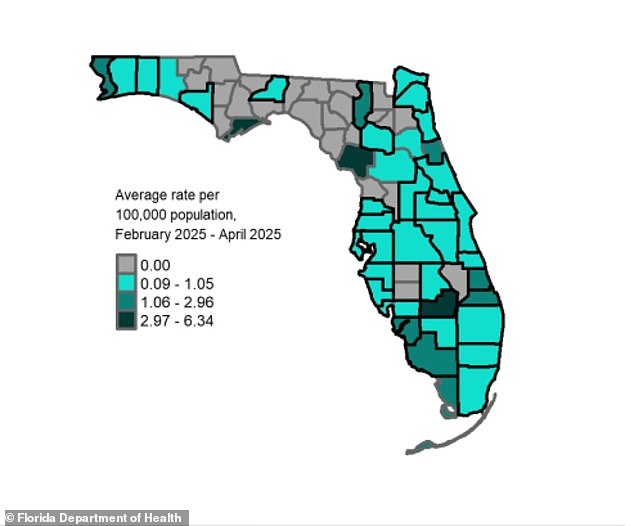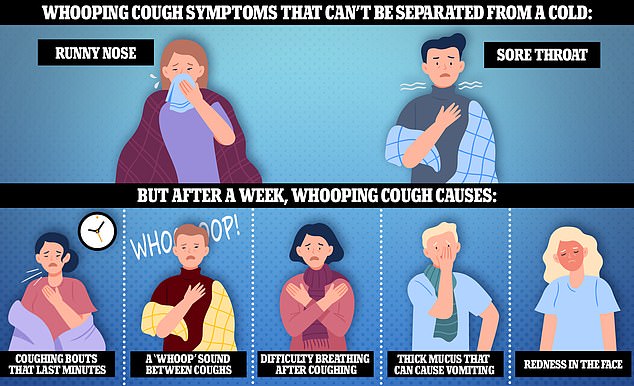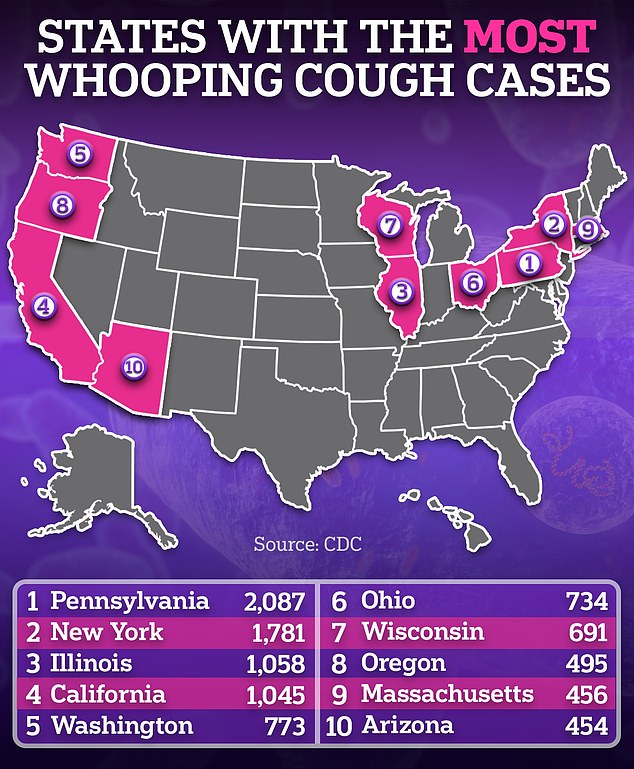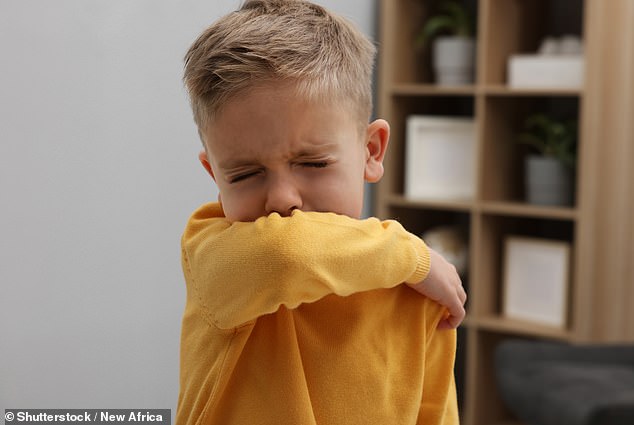Cases of a Victorian-era disease have soared in Florida amid the state’s ban on vaccine mandates.
As of September 27, the latest data available, there have been 1,295 cases of pertussis, also called whooping cough, in Florida, an 81 percent surge compared to the entirety of 2024.
And nationwide, cases rose six-fold in 2024 compared to the year before, CDC figures show, a sign of waning immunity against a disease that once struck hundreds of thousands.
The highly contagious respiratory virus, caused by the bacteria Bordetella pertussis, is especially dangerous for infants and young children who are more prone to pneumonia, seizures, brain damage and death.
Even in non-fatal cases, older children and adults may suffer prolonged coughing fits so fierce that they lead to broken ribs, vomiting and trouble sleeping.
It can be prevented with the Tdap (tetanus, diphtheria, pertussis), which health authorities recommend at two, four, six and 15 to 18 months old, as well as ages four to six.
Preteens ages 11 to 12 should also be vaccinated against pertussis, and the shot is recommended every ten years after that.
But vaccination against whooping cough has declined in the US. During the 2024-2025 school year, Tdap vaccination among kindergarteners dropped to 92 percent compared to 95 percent in 2019, the rate needed to achieve herd immunity.
Health officials have warned that whooping cough, which is extremely dangerous for young children and teens, is on the rise in Florida (stock image)

The above map shows the rate of whooping cough per county in Florida between February and April 2025, the latest data available
In Florida, Tdap vaccination rates were down to 90.6 percent in 2024, the lowest in a decade.
Dr Tara Williams, a general academic pediatrician with the Orlando College of Osteopathic Medicine, told the USA TODAY Network Florida: ‘We are setting up a cesspool of germs for our kids to walk into.’
Whooping cough’s surge comes weeks after Florida Surgeon General Joseph Ladapo announced the state would ban all vaccine mandates for children, including Tdap, polio, hepatitis, Covid and measles, mumps and rubella (MMR) vaccines.
‘Every last one of them is wrong and drips with disdain and slavery,’ he said last month.
The Tdap vaccine is 98 percent effective in children within a year of their last dose. In teenagers, the jab is 73 percent effective in the first year and 34 percent effective four years after vaccination.
Whooping cough occurs when the bacteria Bordetella pertussis attaches to tiny hairs in the throat and nose and release toxins that cause airways to swell.
At first, this may cause mild symptoms like a runny nose or mild cough, but it can progress to a cough so violent it leads many patients to vomit and develop breathing problems.


Polly Deehy (pictured left in the hospital) from the UK had to be placed in a ten-day coma after coming down with whooping cough. And at just one month old, Rosie Robin of the UK (pictured right) was hospitalized for two weeks with the disease

Health officials warned that the infection is initially difficult to tell apart from a cold, as the first signs are a runny nose and sore throat. But around a week later, sufferers may develop coughing bouts that last minutes, struggle to breathe after coughing and make a ‘whoop’ sound between coughs

Prior to the introduction of the pertussis vaccine in 1948, the US saw as many as 250,000 cases of pertussis per year. Cases steadily dropped by more than 90 percent each year compared to the pre-vaccine era, the CDC states.
The CDC has also noted that the bacteria that causes whooping cough, Bordetella pertussis, is prone to mutations, which could make it able to evade vaccines.
Dr Marcos Mestre, chief clinical operations officer at Nicklaus Children’s Health System in Miami, told CBS last year: ‘We have been seeing some increase in pertussis cases that are coming through our emergency departments.
‘Not necessarily requiring admission, but coming in for evaluation and treatment.
‘They’re coughing to the point that they can’t catch their breath. And those are the children we really worry about, when infants are getting infected and that could cause more severe illness.’
First Appeared on
Source link













